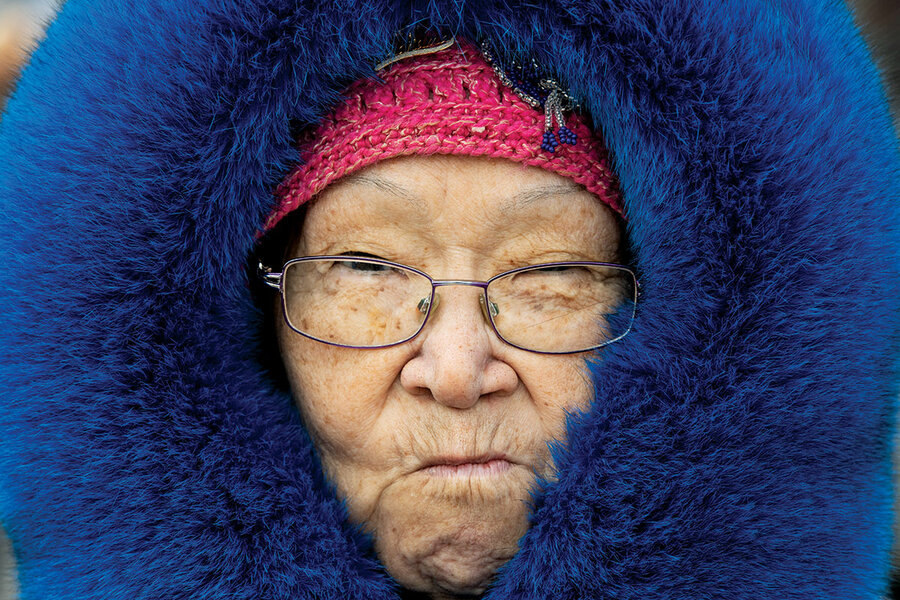In Pictures: Nunavut villagers find home in a stark land
Loading...
| TALOYOAK, NUNAVUT
When we arrived in Taloyoak in the Arctic, a Royal Canadian Mounted Police officer told us he’s been based in almost all of the communities of Nunavut, Canada’s newest territory. And he didn’t hesitate at all to tell us Taloyoak was the nicest.
What that really meant was revealed over the next several days. We were invited to a community cookout. And when we were out on the land, we bore witness to that kindness. Every move made, every decision taken, was one based on the best for the whole.
Why We Wrote This
A story focused onLife in the Canadian Arctic is decidedly hard. But our reporting team found that it is made easier by the spirit of community and shared purpose embraced by Indigenous villagers.
Harsh climates create a need for community for survival. As a visitor to this village, I was privileged to experience it.
Expand this story to view the full photo essay.
When we arrived in Taloyoak in the Arctic, the northernmost community in mainland Canada, it was obvious that photographer Melanie Stetson Freeman and I were outsiders. It’s a tiny town where, in the summer, you get around on foot or by all-terrain vehicle, so we stood out as we went back and forth to interviews.
A Royal Canadian Mounted Police officer approached us the first morning on our way to the hunters and trappers association, whose work we are featuring as part of our Climate Generation series. Mark Flannagan, the officer, told us he’s been based in almost all of the communities of Nunavut, Canada’s newest territory, and he didn’t hesitate at all to tell us Taloyoak was the nicest.
What that really meant was revealed over the next several days. On National Indigenous Peoples Day, June 21, we were invited to a community cookout. As we arrived, two local hunters pulled up with the caribou they shot the night before, tied to the back of their ATV. They weren’t sharing the meat just because it was a special occasion – the Inuit hunters always share what they harvest. It’s all kept in a giant walk-in community freezer and handed out to those in need.
Why We Wrote This
A story focused onLife in the Canadian Arctic is decidedly hard. But our reporting team found that it is made easier by the spirit of community and shared purpose embraced by Indigenous villagers.
A big part of the afternoon was a game for the community elders, where shovel handles were turned into golf clubs and the players took turns trying to hit a target – at least those who could stop laughing at their faulty attempts. Elders here are fiercely loved, cared for, and listened to.
Beyond this event, it was at times hard to get a sense of community here because at the summer solstice, the sun never goes down. That means the community is out on the land, fishing and hunting at midnight, and heading home at 9 a.m. to sleep during the day.
But when we were out on the land with the Indigenous Guardians, conservationist hunters who are at the centerpiece of our project story, we bore witness to that kindness, where every move made, every decision taken, was one based on the best for the whole.
At one point, we were out on the surface of the frozen Arctic Ocean, and someone – no one ever pointed a finger – forgot some essential equipment, so two had to return for it, creating a 90-minute delay. There was no anger. In fact, no one seemed to react (except me, inwardly!). I had read a bit about Inuit parenting before arriving here – about how their society doesn’t condone yelling at children. I thought about it then.
Harsh climates create a need for community for survival. As a visitor to this village, I was privileged to experience it.













